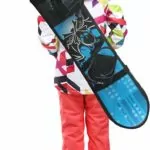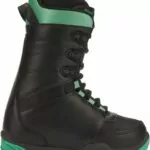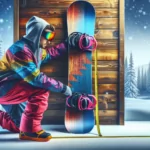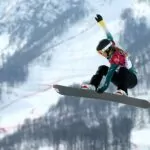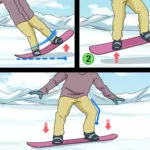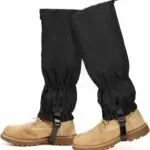Imagine you’re standing on a sleek, gliding snowboard, carving your way down a scenic mountain; but before you can conquer those snowy slopes, you need to determine which foot is going forward. In snowboarding, the discussion about which foot should be in front – left or right – is fundamental to your riding style and can impact your overall experience and performance on the board. This article titled “Which Foot Is In Front Snowboarding?” will help illuminate how to figure out your leading foot and why it’s essential. So, strap on those snow boots and prepare to gain valuable insights to enhance your snowboarding experience.
Understanding Snowboarding Basics
Snowboarding is an exhilarating winter sport that consists of cruising down snow-covered slopes on a snowboard, a flat board with bindings, where your feet are secured. Despite its thrills, this fun activity requires a lot of technique and balance, and it helps to master the basics before hitting the slopes for your first ride.
Overview of Snowboarding
The concept of snowboarding is relatively straightforward, it involves standing on a board and sliding down a snow-covered hill. But, there’s much more to it than that. The real essence of snowboarding lies in your ability to maintain balance, control your speed, and execute different types of turns on the slopes.
Significance of Foot Placement in Snowboarding
One of the most important aspects of snowboarding is foot placement, which refers to how you position your feet on the snowboard. This is essential as it determines your snowboarding stance, which impacts your balance, control, and performance on the snowboard.
Difference between Goofy and Regular stance
Even as a beginner, you will often hear two terms being batted around: “Goofy” and “Regular”. These are the two primary stances in snowboarding.
Definition of Goofy and Regular stance
In a Regular stance, the left foot is in the front of the snowboard, while in a Goofy stance, the right foot is in front. The front foot usually leads the descent down the mountain and influences the direction of movement.
Historical Origins of the Terms
While the exact historical origins of the terms ‘Goofy’ and ‘Regular’ are unclear, it is widely recognized that ‘Goofy’ came from the Disney character Goofy who was portrayed as a right-foot-forward skate rider in vintage cartoon series. Consequently, right-foot-forward snowboarders were described as ‘goofy’, while left-foot-forward riders were called ‘regular’.
Determining Your Snowboarding Stance
To have a smooth and controlled snowboarding experience, it’s crucial to identify your natural and comfortable stance.
Automatic Methods for Determining Stance
Various automatic methods for determining your stance can be used such as letting someone gently push you from behind; typically, the foot you put forward to stop yourself from falling indicates your leading foot, and therefore your stance.
Manual Methods for Determining Stance
Alternatively, manual methods involve introspective assessment of which foot you prefer forward. Think about daily scenarios, for example, which foot would you naturally position forward when stepping onto an escalator?
Importance of Correct Stance in Snowboarding
Having the right stance in snowboarding impacts more aspects than you might initially comprehend.
Influence on Balance and Control
Your stance directly affects your balance and control on your snowboard. A comfortable and natural stance helps you in maintaining stability while making turns, jumps, and navigating terrains.
Impacts on Performance and Speed
Correct snowboarding stance also significantly impacts your performance and speed. The right stance allows efficient weight transfer and offers better control over direction and speed, ultimately enhancing your overall performance.
Relevance to Injury Prevention
Importantly, having the correct stance can reduce your risk of injury. An unnatural or forced stance can strain your muscles and lead to unnecessary injuries.
Adjusting to your Natural Stance
Once you have determined your stance, the key is to get comfortable with it until it becomes second nature.
Tips for Beginners for Adjusting to Stance
As you begin snowboarding, keep practicing with your natural stance repeatedly. Over time, you’ll find yourself automatically positioning your feet correctly without even thinking about it.
Physical Conditioning for Stance Adjustment
Conditioning your body for the physical demands of snowboarding can be fulfilled by regular workouts that strengthen your muscles, improve your flexibility and balance.
Mental Preparation for Accepting Natural Stance
Remember, there’s no right or wrong when it comes to stance in snowboarding. It’s all about what feels natural and comfortable to you. Do not force a stance that doesn’t feel right just because your friend or a professional snowboarder uses that stance.
Riding Switch in Snowboarding
While it’s crucial to be comfortable with your natural stance, snowboarding also includes a technique called ‘riding switch’.
Definition and Benefits of Riding Switch
Riding switch simply means snowboarding in the opposite direction to your natural stance. For example, if your natural stance is Regular, then riding switch would mean snowboarding in a Goofy stance, and vice versa. This skill can come handy in situations where you need to change directions quickly or navigate tricky terrains.
Steps to Learning How to Ride Switch
Initially, it might be challenging to ride switch but with practice, it can help improve your balance and coordination. You can begin by practicing this on flat terrains before moving onto gentle slopes. Always start slow and gradually increase your speed as you get more comfortable.
Difficulties in Mastering Switch and How to Overcome
Mastering the switch can be difficult as it can feel like learning to snowboard all over again. The key here is patience and practice. Stand firmly, keep your body relaxed and stick with it until you gain confidence.
Alternative Snowboarding Stances
Apart from Regular and Goofy, there are few other stances that you should be aware of as a snowboarder.
Fakie Stance in Snowboarding
Fakie stance is a term borrowed from skateboarding where the rider travels in a direction with the tail leading down the slope.
Duck Stance and Its Uses
Duck Stance where both feet are angled away from each other. It’s advantageous for freestyle snowboarding and in parks, giving an equal range of motion forward and backward.
Understanding Alpine Stance
In the Alpine stance, both feet point forward down the board, offering greater stability and control at high speeds.
Equipment Setup for Snowboarding Stances
Getting your equipment set up right is crucial for accommodating your natural stance and enhancing your performance.
Adjusting Snowboard Bindings for Your Stance
Adjusting your snowboard bindings in alignment with your stance can highly influence your control over your ride. The angle, width and position of the bindings all should complement your stance.
Influence of Boot Choice on Stance
Selecting the correct snowboard boots is essential since they transfer the body movements to your board. Stiffer boots offer better control at higher speeds and in hardpack conditions, while softer boots are generally preferred for freestyling and beginner riders.
Board Selection Based on Preferred Stance
Lastly, the type of board you choose should also be based on your preferred stance. Directional boards are designed for riding primarily in one direction, and twin boards allow for riding in both directions, which are ideal for practicing switch and tricks.
Influential Snowboarders and Their Stances
Every professional snowboarder has their unique stance that distinguishes them from others.
Professional Snowboarders Known for Their Unique Stances
There are many well-known snowboarders who gained recognition for their unique stances. For example, Terje Haakonsen, known for his Alpine stance, or Shaun White, recognized for his Duck stance.
The Role of Stance in Defining a Snowboarder’s Style
A snowboarder’s stance is akin to a fingerprint, unique to the individual and reflecting their personal style. Stance not only affects a snowboarder’s performance but also helps them carve out their unique identity in the sport.
Tips for Improving Your Stance Over Time
Like any other sport, the key to improve your snowboarding stance is consistent practice.
Professional Guidance for Stance Improvement
Learning from professionals either through in-person lessons or online tutorials can provide guidance on how to enhance your stance and overall performance.
Practice Methods for Bettering Stance with Time
Repetition is key in mastering your stance. The more you practice your stance, the more natural it will feel. Regular drills where you consciously practice your stance can be beneficial.
Essential Physical Exercises to Assist Stance Stability
In addition to snowboarding, performing specific physical exercises off the slopes, such as yoga, Pilates, or weight training can strengthen your core muscles and improve your balance, both of which will contribute to improved stance stability.
Remember, everyone learns at a different pace and there is no one-size-fits-all approach to mastering the snowboarding stance. With patience, practice, and effort, your initial awkwardness will soon give way to an exhilarating experience down the mountain. Happy shredding!
- What Snowboard Bindings Should I Get? - January 23, 2024
- What Size Screws For Snowboard Bindings? - January 23, 2024
- How To Snowmobile On Water? - January 23, 2024

